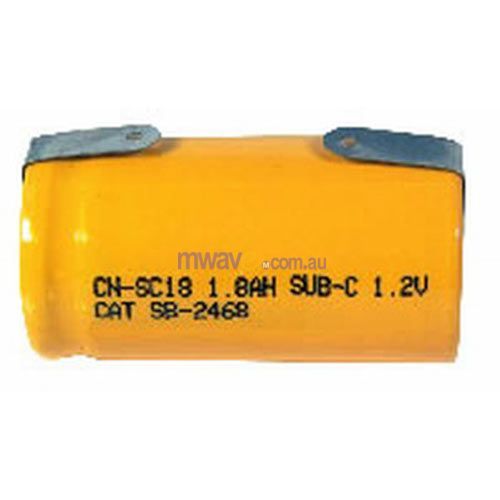

Not only that, but then NiCads can be safely charged in as little as 1-2 hours! We recommend PremiumGold NiCad replacement power tool batteries.
Nicad c battery full#
NiCads, on the other hand, will cause the power tool to stay at full power up until the very end of the charge. With a Lithium-ion, alkaline, or even a lead-acid battery, the power tool will perform extremely well from the start, with a steady decline in power, until the power tool barely works at all. With NiCad technology, power tools are able to operate at full capacity for the entire time of use, not only the first few minutes of operation.

Power tools demand a high amount of power delivery throughout the entire time of use, and do not function as well with dropping voltages as a typical battery would deliver. One of the most practical applications for NiCad batteries is in cordless power tools.

This feature, combined with the constant voltage of the cells, allows them to put out a high amount of amperage, at a consistently higher voltage than comparable alkaline batteries. Having such a low internal resistance keeps the internal temperature low as well, allowing for quick charge and discharge times. Because their internal resistance is so low, they are capable of discharging a lot of power very quickly, as well as accepting a lot of power very quickly. Another reason the NiCad batteries can deliver such high power output, is they have very low internal resistance. This allows for the voltage to be the same as the traditional type batteries, while still retaining the constant voltage that is so unique of NiCads. Some manufacturers make up the voltage difference by adding an extra cell to the battery pack. So, while they have a lower voltage per cell, they have a more powerful delivery throughout the entirety of the application. This causes the NiCad batteries to have the ability to deliver full power output up until the end of its discharge cycle. NiCad batteries are unique in that they will maintain a steady voltage of 1.2v per cell up until it is almost completely depleted. A typical alkaline or lead-acid battery has a cell voltage of approximately 2V, which then steadily drops off as it is depleted. One of the main key differences is in cell voltage. NiCad batteries are different from typical alkaline batteries or lead-acid batteries in several key ways. Typically the positive electrode is made of Nickel hydroxide (Ni (OH) 2) and the negative electrode is composed of Cadmium hydroxide (Cd (OH) 2), with the electrolyte itself being Potassium hydroxide (KOH). Nickel-Cadmium batteries contain the chemicals Nickel (Ni) and Cadmium (Cd), in various forms and compositions. ‘NiCd’ is the chemical abbreviation for the composition of Nickel-Cadmium batteries, which are a type of secondary (rechargeable) batteries. If you have questions that are not addressed, please let us know and we hopefully be able to help. In this tutorial we will do our best at keeping it simple, accurate, and to the point. If this is not your first stop in the NiCd information trail I am sure the information that you have read, heard, or found on the internet is just about overwhelming.


 0 kommentar(er)
0 kommentar(er)
